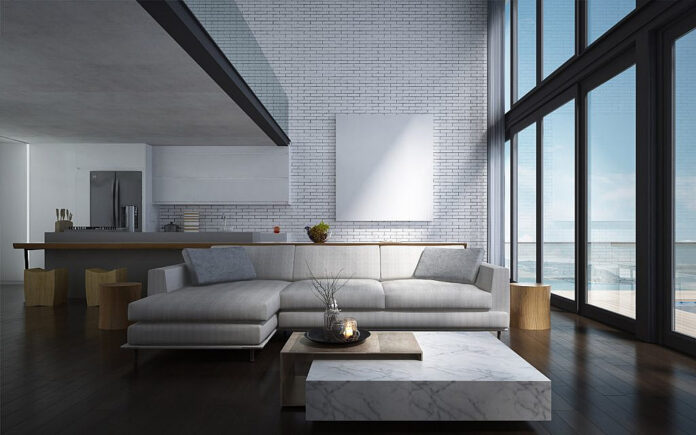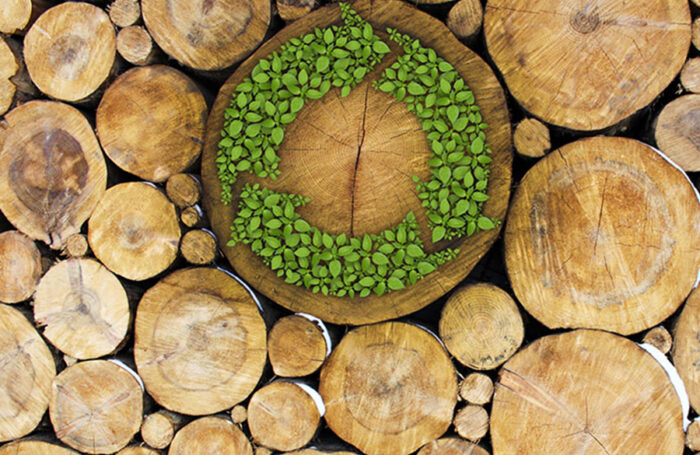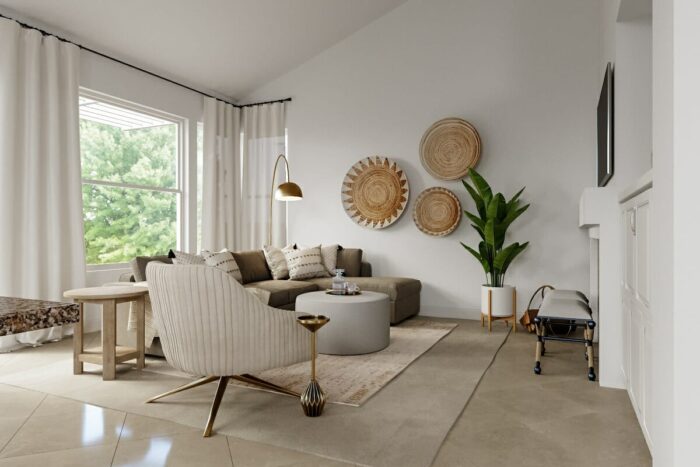
The progressive and rapidly expanding city of Abu Dhabi constantly strives for environmental consciousness and sustainability. Interior design has gained attention as awareness of climate change and the significance of environmentally friendly practises has grown. Interior design incorporating eco-friendly solutions contributes to a greener future and improves the residents’ quality of life. Let’s explore the idea of sustainable interior design in 4Space Abu Dhabi and eco-friendly methods for designing spaces that consider the environment.
Sustainable Materials and Finishes

The careful choice of materials and finishes is one of the critical aspects of sustainable interior design. Incorporating eco-friendly materials, like low-VOC paints, recycled glass, and reclaimed wood, can significantly reduce a space’s carbon footprint. Reclaimed wood gives room for character and warmth. It also cuts down on the demand for new wood. You can use recycled glass in decorative elements, tiles, and countertops, minimising the use of new raw materials. Choosing low-volatile organic compounds (VOC) paints helps enhance indoor air quality by reducing the emission of harmful substances.
Bamboo is another popular sustainable material utilised in interior design. It’s a resource you can quickly regenerate and grow without using fertilisers or pesticides. Bamboo flooring is an alternative to conventional hardwood flooring that’s long-lasting and aesthetically pleasing.
Besides using environmentally friendly materials, carpets and rugs made of natural fibres can contribute to a healthier indoor environment. Organic cotton, jute, and sisal are renewable, biodegradable materials that don’t typically contain harmful chemicals.
Energy Efficiency
In Abu Dhabi, achieving sustainable interior design necessitates reducing energy consumption. Energy-efficient lighting solutions can provide high-quality illumination while simultaneously reducing energy consumption. Light-emitting diode (LED) bulbs are a great choice because, compared to traditional incandescent bulbs, they use less energy, last longer, and produce less heat.
The need for daytime artificial lighting is reduced when windows and skylights are strategically placed to maximise natural light. Using light-coloured interior surfaces and walls to reflect natural light and integrating daylighting design principles can create inviting and visually appealing environments.
Smart technology systems like energy-efficient appliances and automated lighting controls can improve energy efficiency in residential and commercial settings. You can reduce energy waste by adjusting lighting levels automatically based on natural light or occupancy. Energy-efficient appliances like refrigerators, washing machines, and air conditioners can significantly reduce energy consumption and promote sustainability.
Water Conservation

Water conservation efforts are crucial since water scarcity is a persistent issue in Abu Dhabi. Incorporating water-saving fixtures can substantially reduce water consumption in interior spaces. Dual-flush toilets, low-flow showerheads, and faucets are excellent choices for reducing water consumption without sacrificing functionality.
Greywater recycling systems can also help reuse water from the shower, washing machine, and sink for irrigation. Greywater is clean water you can redirect to flush toilets or water outdoor plants rather than depending on freshwater sources.
Designing green spaces with native and drought-resistant plants can also minimise water requirements. Unlike non-native species, these plants are used to the local climate and need less water and maintenance. Efficient irrigation methods, e.g., drip irrigation, may help deliver water directly to roots, reducing evaporation waste.
Indoor Air Quality
Ensuring excellent indoor air quality is essential for the residents’ health and well-being. Using proper ventilation systems enables fresh air circulation and minimises the dependence on energy-consuming air conditioning. Heat and moisture can be recovered and exchanged between the outgoing and incoming air by energy recovery ventilation systems, increasing energy efficiency and providing fresh air.
Choosing natural and non-toxic materials will help reduce indoor air pollution and create a healthier living environment. Low VOC-emitting paints and finishes and formaldehyde-free wood furniture can aid indoor air quality. Natural fibres for curtains and upholstery, such as linen or organic cotton, are preferable since they don’t emit harmful chemicals.
Routine cleaning and maintenance practises, like frequent dusting and vacuuming, help remove pollutants and allergens from indoor spaces. Adequate ventilation is essential for emitting fumes and volatile chemicals during renovation activities or painting.

Conclusion
In conclusion, Sustainable Interior Design in Abu Dhabi and the implementation of eco-friendly methods for designing spaces have become crucial considerations in the region. As Abu Dhabi strives to achieve its sustainability goals and reduce its environmental impact, the interior design industry has responded by incorporating sustainable practises that prioritise the well-being of both occupants and the planet.
One of the key aspects of sustainable interior design in Abu Dhabi is energy efficiency. Designers are increasingly integrating energy-saving technologies, such as LED lighting, smart HVAC systems, and efficient insulation, to minimise energy consumption and reduce the carbon footprint of buildings. These measures not only contribute to a more sustainable future but also help reduce operational costs for building owners and occupants.
Additionally, the choice of materials plays a significant role in eco-friendly interior design practises. Designers in Abu Dhabi are prioritising the use of sustainable, recycled, and locally sourced materials that have minimal environmental impact. This includes incorporating natural and renewable resources such as bamboo, cork, reclaimed wood, and low VOC (Volatile Organic Compound) paints, which promote better indoor air quality and reduce harmful emissions.
Furthermore, sustainable interior design in Abu Dhabi places a strong emphasis on creating healthy and comfortable indoor environments. Designers are incorporating biophilic design principles that connect occupants with nature, integrating elements such as natural light, indoor plants, and outdoor views. This approach not only enhances the aesthetic appeal but also promotes well-being, productivity, and a sense of harmony within the built environment.
To support the implementation of sustainable interior design practises, Abu Dhabi has witnessed the emergence of eco-friendly certifications and standards. Organisations such as the Abu Dhabi Urban Planning Council and Estidama have introduced rating systems, such as the Estidama Pearl Rating System, which assesses the sustainability performance of buildings and encourages the adoption of environmentally friendly design practises.
The various initiatives focusing on creating a greener future demonstrate Abu Dhabi’s dedication to sustainable development. Incorporating sustainable interior design practises will help achieve this goal. You can create environmentally conscious and aesthetically pleasing spaces in Abu Dhabi by using eco-friendly materials and finishes, prioritising energy efficiency, improving indoor air quality, conserving water, and choosing sustainable furniture and accessories. Besides improving residents’ and visitors’ quality of life and well-being, such efforts also allow for a sustainable future.
















